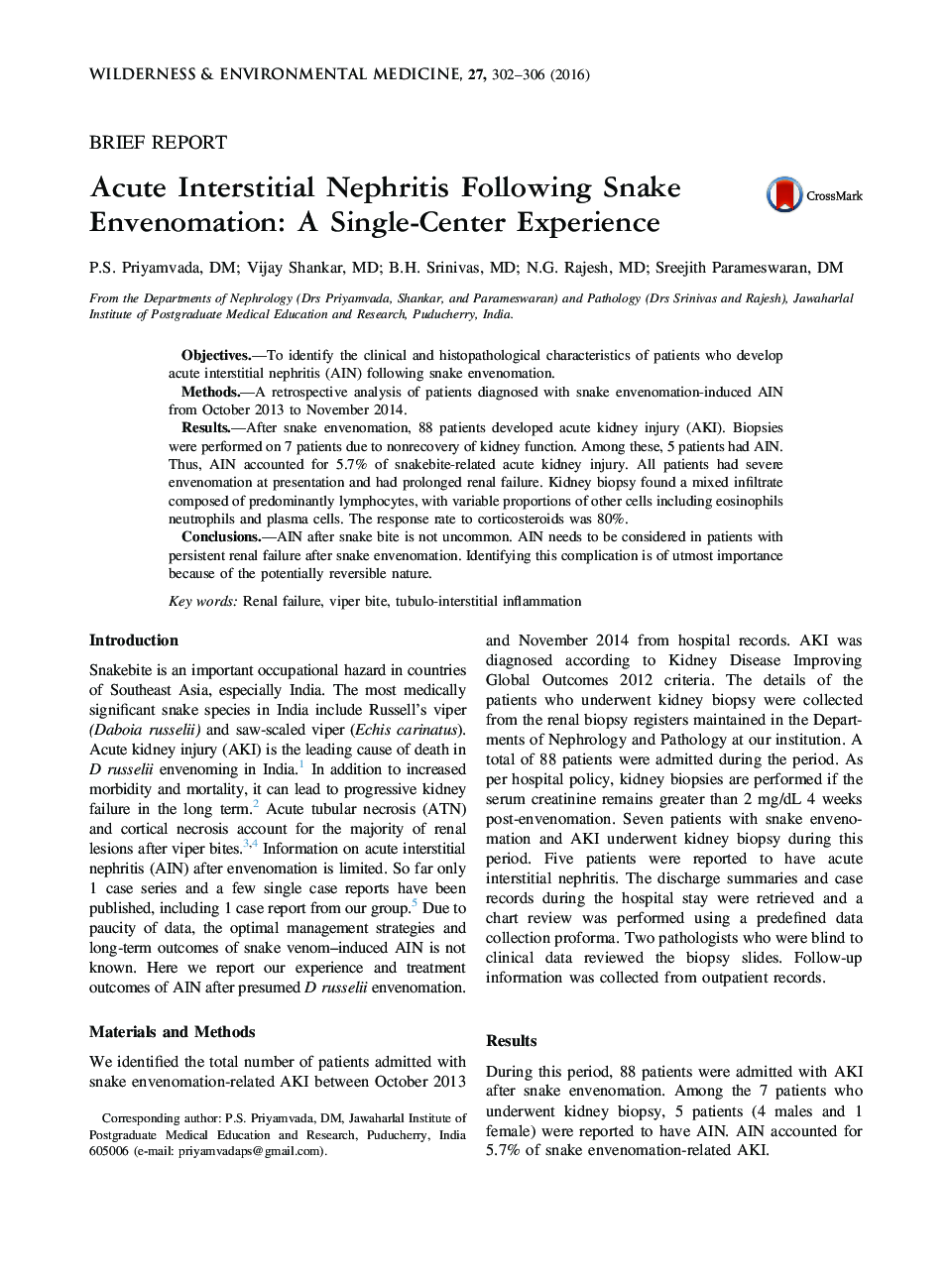| Article ID | Journal | Published Year | Pages | File Type |
|---|---|---|---|---|
| 2615343 | Wilderness & Environmental Medicine | 2016 | 5 Pages |
ObjectivesTo identify the clinical and histopathological characteristics of patients who develop acute interstitial nephritis (AIN) following snake envenomation.MethodsA retrospective analysis of patients diagnosed with snake envenomation-induced AIN from October 2013 to November 2014.ResultsAfter snake envenomation, 88 patients developed acute kidney injury (AKI). Biopsies were performed on 7 patients due to nonrecovery of kidney function. Among these, 5 patients had AIN. Thus, AIN accounted for 5.7% of snakebite-related acute kidney injury. All patients had severe envenomation at presentation and had prolonged renal failure. Kidney biopsy found a mixed infiltrate composed of predominantly lymphocytes, with variable proportions of other cells including eosinophils neutrophils and plasma cells. The response rate to corticosteroids was 80%.ConclusionsAIN after snake bite is not uncommon. AIN needs to be considered in patients with persistent renal failure after snake envenomation. Identifying this complication is of utmost importance because of the potentially reversible nature.
